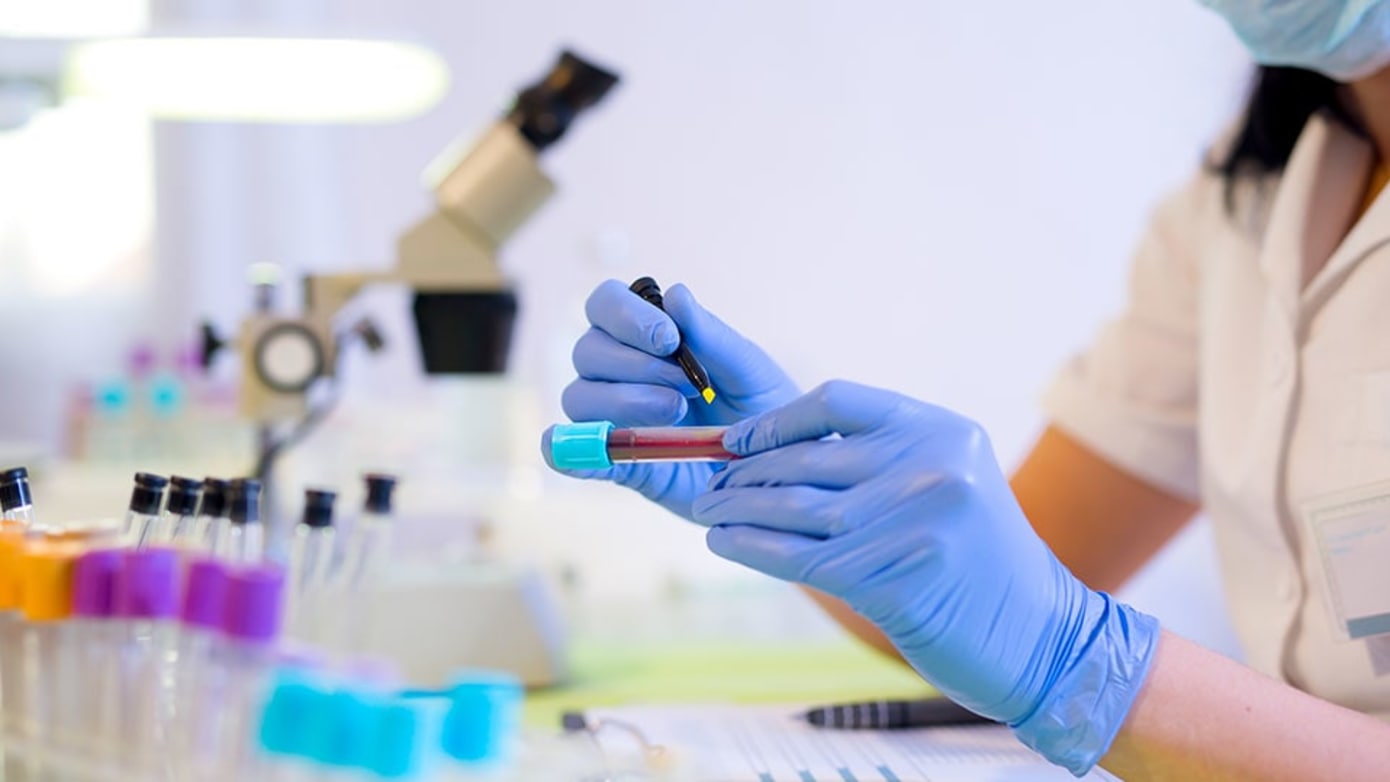Why don’t more gynecologists offer this simple — yet vital — fertility test?
Once you dip a toe into the choppy waters of infertility, all of the insider initialisms can be overwhelming (FET, TTC, IUI — the list goes on). But there’s one three-letter initialism that you especially need to know, and it’s AMH. It stands for anti-mullerian hormone, and many doctors consider it to be the most reliable indicator of ovarian reserve — aka the number of healthy eggs a woman has left.
I learned the hard way that not all doctors offer this test to women with unexplained infertility. After my husband and I had been trying almost a year with no luck, I visited my gynecologist to get some answers. Tests of my estradiol, FSH (follicle-stimulating hormone) and progesterone levels all came back “great” — so she told me to stay the course and come back in six months if I wasn’t pregnant yet.
Six months later, my oven was still sans bun, so I called my gynecologist again to see if we could do an intrauterine insemination treatment. But when I went for the initial visit, no egg follicles could be seen on the ultrasound. My gynecologist was perplexed, as was I — after all, my period had always been like clockwork, and my hormone levels had measured right on track for healthy reproduction. But my proverbial egg carton, indeed, appeared to be empty.
At that point, it had been a year and a half of trying to conceive, so I decided to say sayonara to my gynecologist and consult a fertility doctor (aka reproductive endocrinologist). The RE performed more extensive testing, which paid off. I learned that my AMH levels were very low at 0.45. (I was 37 at the time, but those levels were on par with a woman over 41.) Translation? I had a diagnosis of diminished ovarian reserve, and I wasn’t likely to conceive without medical intervention — or possibly at all.
As anyone whose biological clock seems to be ticking louder knows, time is of the essence when you’re over 35 and trying to become a mom. (Just ask the American Pregnancy Association, which says the average time it takes couples in this age range to conceive is one to two years.) After my diagnosis, I struggled to accept the reality that I’d wasted a year and a half of valuable time — especially in light of the fact that all it took to explain my issue was a simple blood test I could have gotten right away.
By taking an informal poll of my Resolve infertility support group, I learned that more than half had also never been tested for AMH until visiting a fertility clinic. I got similar answers posting queries in various infertility-related Facebook groups.
And when I spoke with Dr. Deborah Simmons, a Minnesota-based therapist who specializes in infertility, she said, “many of my patients tell me they have wasted valuable time and years with their OB-GYNs, who have not checked AMH levels at all. I tell my patients that OB-GYNs are marvelous at pregnancy and delivery, but most are quite poor at checking for infertility.”
So why don’t more gynecologists offer this simple — yet vital — test?
According to Austin-based reproductive endocrinologist Kaylen Silverberg, it’s that their understanding of fertility isn’t on par with that of an RE.
“Gynecologists are not fertility specialists,” says Silverberg, who works with Texas Fertility Center. “Even though they are well-intended, most gynecologists aren’t aware of AMH or how to interpret it.” He adds that most gynecologists only get four to eight weeks of formal training on infertility during their medical residency, while board-certified fertility doctors must complete an additional three years of training in reproductive endocrinology.
Add to that the fact that AMH has only entered the fertility conversation somewhat recently — about eight to 10 years ago, says Dr. Ruben Alvero of the Women & Infants’ Fertility Center in Providence, Rhode Island. “AMH is a relatively new addition to what we do, so OB-GYN doctors may have been training back when FSH was the only test.”
Both Silverberg and Alvero take AMH into account with a number of other variables to get the most complete picture of a woman’s reproductive prospects. Age and other hormone levels are also factored into the equation — specifically FSH and estradiol (measured on cycle Day 3) — as well as antral follicle count (the number of follicles seen via ultrasound).
But, in many cases, AMH is considered the best barometer of ovarian reserve.
“There is some data that suggests AMH is the most predictive [test] of where someone is in her reproductive lifespan,” says Silverberg. “If I see a 30-year-old with an AMH of 3, then I can tell her with some degree of assurance that menopause is not around the corner. If I see a 30-year-old with an AMH of 0.2, I can say with 100 percent certainty that we have to get moving immediately if she wants to use her own eggs.” (Wondering what the optimal AMH level is for your age? Check out this chart.)
As for myself, I did end up overcoming the odds to have a set of beautiful twins — but only after a series of six harrowing IUI and IVF treatments. If I could do it all over again, I’d definitely have requested the test as soon as I suspected something was amiss, and that is my advice to any woman who wants to have children. It’s time more gynecologists got the memo, and that will only happen if we are our own advocates.
The moral of the story? Do count your eggs.




comments